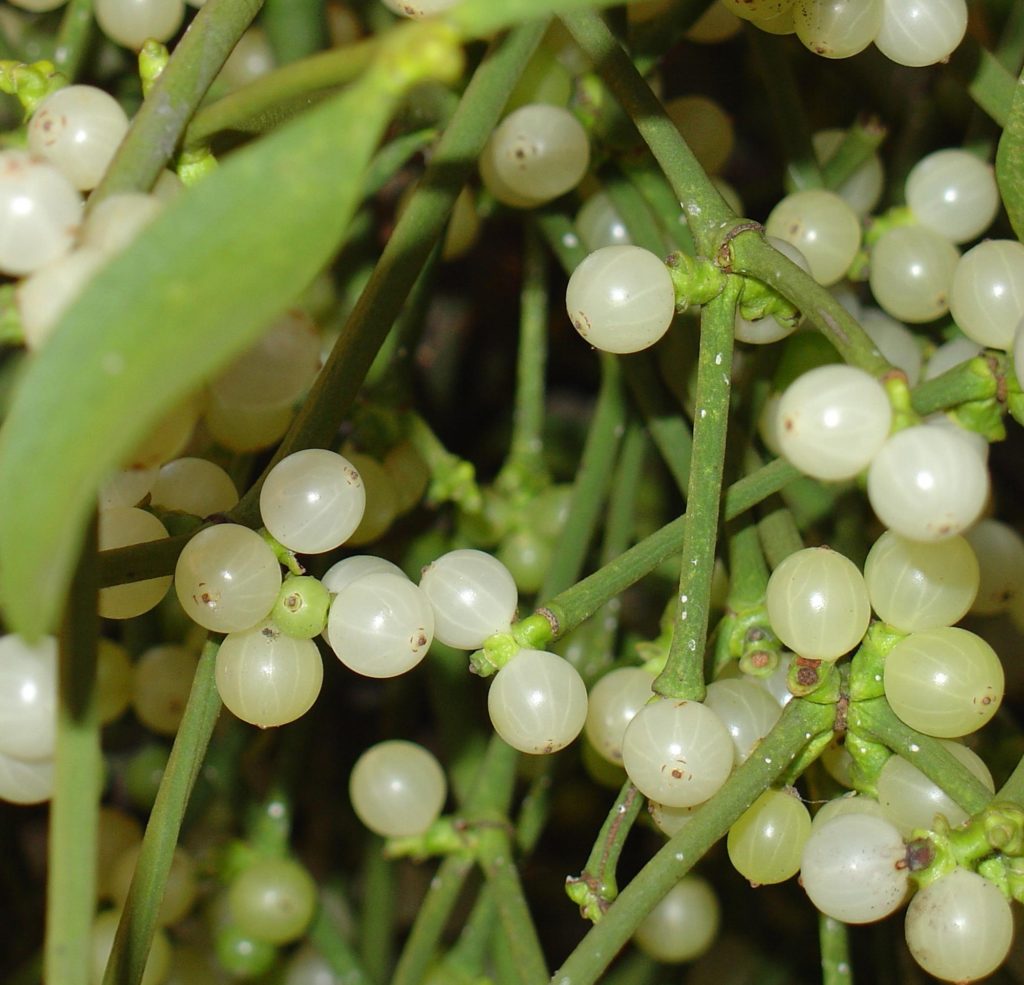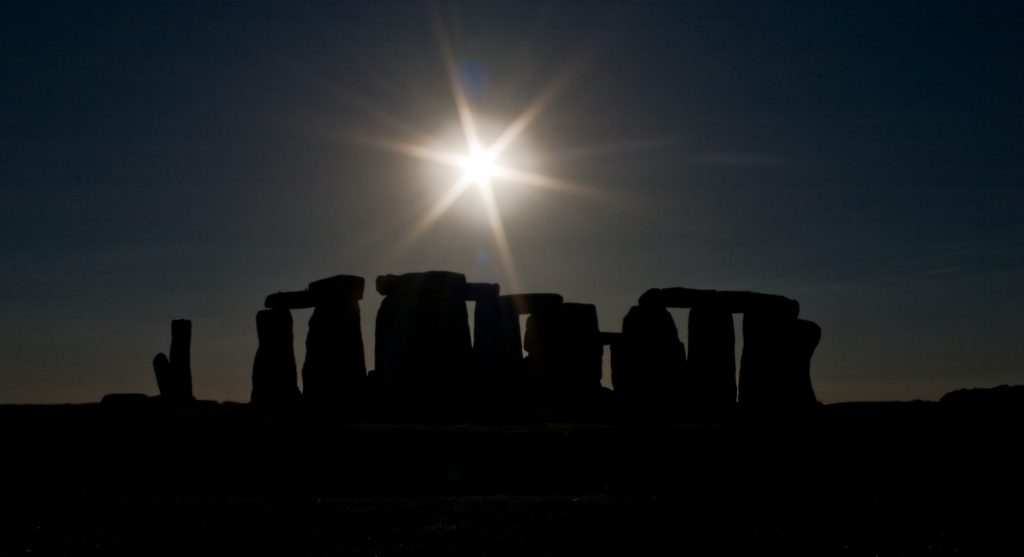Mistletoe

Mistletoe, a plant that can both give you a reason to kiss your crush on the holidays, and an honorable mention in the “No means no” book.
Either way, mistletoe is known as a holiday decoration that can bring some flirty (and uncomfortable) tradition to your celebrations.
This Th-HERBS-day, we honor Mistletoe, (Viscum album, Phoradendron serotinum).
It is a member of the Loranthaceae family, also known as the “Showy Mistletoes.”
Aside from kissing being associated with mistletoe, this plant was once taken extremely seriously in ancient Pagan traditions.
During the solstice times of the year, the energy of mistletoe shines like its ruling Sun planet.
The use of mistletoe stretches from practices in Paganism to practices in Santeria.
Even the Romans would adorn the graves of loved ones with sprigs of mistletoe to honor them during Saturnalia.
As we venture into the background of mistletoe, we’ll find the significance and symbolism tied to this historically cunning plant.

Mistletoe and The Druids
Ancient Celtic Druids and mistletoe go together like…well…. mistletoe and kissing.
So much so, this was even represented in the fantasy Druid-focused series Britania, season one, episodes 4 and 5.
Mistletoe was regarded as the most sacred of all the herbs in their workings, and harvesting it was serious business.
The Celtic Druids would harvest the mistletoe every Midsummer with a golden sickle reserved solely for its harvest.
If the mistletoe was found on an oak tree, it was viewed as a blessing from the Oak God himself.
Careful not to let the mistletoe touch the ground, the druids collected the mistletoe for sacred rituals.
It was believed to be used for spells, divination, medicine, fertility rites, and hung in homes to ward off evil.
However, archaeological evidence from bog bodies reveals that mistletoe was mostly used medicinally.

The Herb of Fertility
If you are new in your practice, you might be wondering why so many witches hold this herb as one of the most sacred in their craft.
Mistletoe was sacred in the ancient Pagan world because it represented fertility.
The white sticky berries are symbolic of semen and the way in which it attaches to host trees is symbolic to embryos in a womb.
Its uniquely androgynous as it contains both male and female parts, but it is hard to decipher gender parts of the plant unless berries are present.
This androgynous symbolism makes mistletoe extra sacred as it was believed to aid in the fertility of both men and women.
Androgyny is commonly associated with the soul and the angelic realms in many belief systems.
The belief that the soul is both masculine and feminine derives from the idea that source/God is both male and female.
Because mistletoe harbors these energies and is ruled by the sun, its essence is especially powerful in literally all forms of ritual and spell crafting.

Witchery With Mistletoe
Mistletoe is poisonous, so it’s best not to use it for spells that could potentially expose you to its toxins.
The best way to harness its powerful energy is to adorn your altar with fresh sprigs during Yule (or Litha).
You may also want to hang sprigs of it in both doorways and windows to add extra protection to the home.
If you are knowledgeable about handling this poisonous plant, you could wear mistletoe as a crown.
A safe way to wear the herb is by placing it in a small jar or pouch and tying it to a necklace chain, or keeping it in your pocket.
Mistletoe’s magick is so potent that you really don’t have to do anything extensive to harness its power.
To really connect with the spirit of mistletoe, try meditating with it to receive its message directly from the herb itself.
Pay attention to the images that spontaneously come to mind and the emotions that emit to and from yourself and the herb.

Mistletoe’s Energetic Properties
This list of mistletoe properties is an extremely helpful guide to assist you in spell crafting and rituals.
The energy of the herb is heightened when planned carefully with corresponding days, seasons, zodiacs, etc.
Here are 18 energetic properties associated with mistletoe:
1. Planet: Sun
2. Zodiac Sign: Leo
3. House: 5th
4. Element: Fire, Air
5. Gender Energy: Masculine and Feminine
6. Chakra: Ajna/Third Eye (Indigo)
7. Archangel: Raphael
8. Deity: Helios (Greek), Baldur (Norse), Usil (Etruscan)
9. Sabbat: Yule, Litha
10. Season: Winter
11. Day: Sunday
12. Body: Heart, Back, Right Eye of Males, Left Eye of Females
13. Rune: Hagalaz, Nauthiz
14. Numerology: 1
15. Fae: Salamander, Fairy
16. Major Arcana: The Sun, Strength
17. Minor Arcana: Wands, Swords
18. Cartomancy: Diamonds, Spades

Cultivating Mistletoe
Growing mistletoe is almost next to impossible because it is a poisonous and parasitic plant.
It must have a host tree in order to survive, and it could be outlawed depending on where you live.
It thrives only with the help of birds and animals eating and spreading its seeds to treetops.
Its seeds reach the tops of the host tree’s branches by the droppings of the animals that eat it.
There it germinates by penetrating beneath the bark of the tree and tapping into the tree’s nutrient supply.
It’s best to forage for it rather than attempt to cultivate it yourself.
Just be sure to wear gloves and get permission from landowners if foraging on properties that aren’t your own.
Happy Th-HERBS-day!
